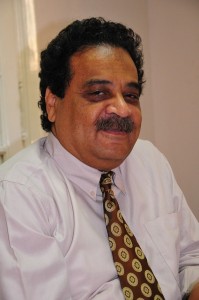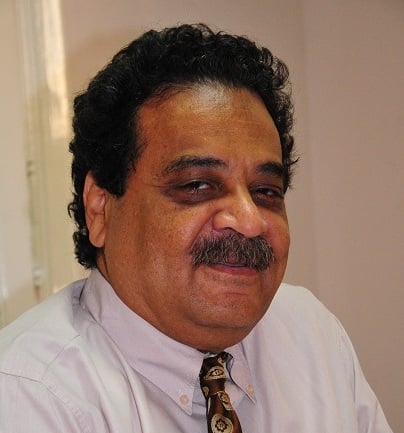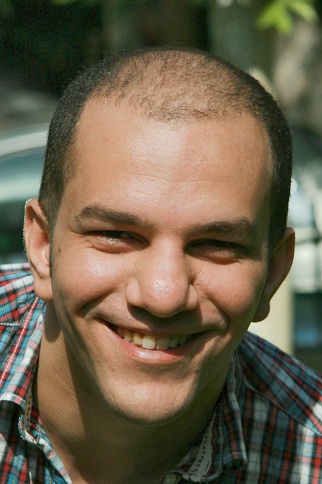
Analysing the current political scene is quite difficult, because things are happening very fast, and predictions that are to be published in two-days time might turn out to be far from reality. Despite the difficulty, I am bound to present an analytic reading of the situation, hoping that this reading would succeed in presenting an accurate picture of current affairs in the country.
First, let us confirm that there are three main political powers in Egypt: the Islamist political movements, at the heart of which is the Muslim Brotherhood; the feloul or remnants of the former regime or supporters of the hegemonic state, at the heart of which is the armed forces and the security apparatus; and lastly the democratic movement, at the heart of which is the political parties of the National Salvation Front. These three powers cooperated to bring down Mubarak. The Islamist political movement’s goal was to create a religious state, the feloul’s goal was to eliminate the possibility of Mubarak passing along the rule to his son and rebuild a weak state, and lastly the democratic movement’s goal was to create a modern, democratic state.
After the toppling of Mubarak, all three powers tried to exclusively take over power and some of them resorted to temporary alliances to achieve that. Yet, the balance of power between the three groups did not allow for any of them to take over power on their own. Some of the democratic forces realized that early and started to talk about the necessity of reconciliation, especially in case of the constitution, and coexistence. Conversely, the Islamist political movement and the feloul refused to share power and worked on the exclusion of the other groups, because their projects do not include, in any way, coexistence, but in fact require some tyranny.
We can deduce that 30 June is an important stage in the quest to eliminate the Brotherhood’s project, which tries to build a tyrannical religious state and exclude the other two groups. It is apparent that just like the Supreme Council of the Armed Forces (SCAF) failed to rebuild the hegemonic state through exclusion, the Brotherhood failed to move forward with its own project. In both cases, exclusion was the adopted strategy, and each group tried to exploit the other through some tactical alliance. This alliance was formed reluctantly due to their exclusory strategy.
30 June was an attempt by the supporters of the hegemonic state and the democratic movements to put an end to the Brotherhood’s project. Even though the initiative was sparked by youths, this time it is different. This time, the young people involved represent a public front that is more acceptable to the political powers; the 30 June Front is comprised of youth involved in various political parties. However, the remnants of the National Democratic Party and other former-regime forces also worked hard in collecting Tamarod signatures in the background. We are witnessing an implied alliance between the supporters of the hegemonic state and Mubarak’s junta, which garnered a lot of hate from different sections of the political society.
The fight, as usual, is between the three groups. This time, the Brotherhood faces an alliance between the supporters of the hegemonic state and the democratic movement, but where are the people in this fight?
In my own reading of the situation, the people are the subject of the fight, or the prize which the winning fighter will claim, knowing that when you win the support of the people, you can achieve all your goals, including reaching power. The support of the people was the reason behind the toppling of Mubarak’s junta, and the electoral support of the Brotherhood, allowed them to reach power. The question now is; where is the United States in this fight?
The US is a helping agent. It does not get directly involved in the situation, but its support to one of the groups can be decisive. In the current situation, none of the groups’ projects particularly opposes or supports the US’s interests. Therefore, the US could prefer one group over the other according to other factors and details, but in most cases, it will just side with the winner.
The three groups are divided in the street into six sections: the armed forces, the police, the feloul, the Muslim Brotherhood, the democratic parties and the Salafis, who have separated themselves from the Islamist political movement and became an independent force. The Salafis will most likely side with the police and feloul, with the armed forces acting as their front, and they will be bound by what the army decides. In addition, some of the members of the democratic movement, to get rid of the Brotherhood, have completely sided with the army, considering it the ultimate saviour.
After millions took to the street on 30 June, the Brotherhood started to understand the size of the public’s discontent. The Brotherhood’s confidence is now shaken, and they are starting to accept the need to make some concessions, which was apparent from the words of the presidential spokesman despite the unclear language he used. His statement confirmed that the Brotherhood can accept any kind of concession except the dismissal of the president.
Remarkably, the Brotherhood, after failing to scare people with their speeches and some violent events prior to 30 June, now they are trying to scare their own members with the people’s revenge that will take place after the toppling of Morsi. They want to unleash their members’ hostile and terroristic energy to disrupt the nation’s security and that of its citizens, which is a worrying concept for any power in charge of the country during its transitional state. It can also be a worrying concept for the security apparatus like the army and police. Therefore, there are two possible scenarios.
The first scenario is the dismissal of Morsi and holding early elections, and this means the Brotherhood will suffer from a great blow that could lead them to adopt violence and terrorism.
The second scenario is that Morsi is kept in power but with his powers reduced and the implementation of some of the democratic movement’s demands, which will be concerned with curbing the Brotherhood’s reach in the country.
Many factors will be involved in deciding which scenario will take place, including the US’s position, the size of the crowds demanding the dismissal of the president and the security threat of the Islamist political movement, especially in Sinai.
In all cases, the Brotherhood will suffer a painful blow to their organisation.




